
How to Use 24/12v Buck: Examples, Pinouts, and Specs
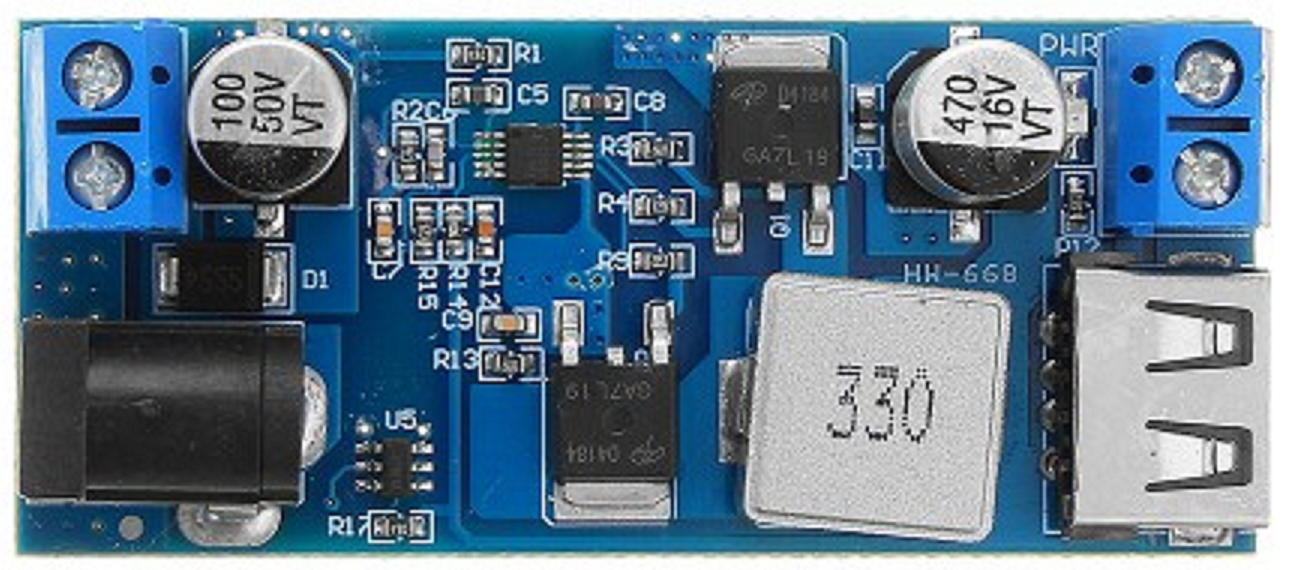
 Design with 24/12v Buck in Cirkit Designer
Design with 24/12v Buck in Cirkit DesignerIntroduction
The 24/12V Buck Converter is a DC-DC step-down voltage regulator designed to efficiently convert a 24V input to a stable 12V output. This component is widely used in applications where a lower voltage is required to power devices from a higher voltage source. Its high efficiency ensures minimal power loss, making it ideal for battery-powered systems, automotive electronics, industrial equipment, and embedded systems.
Explore Projects Built with 24/12v Buck
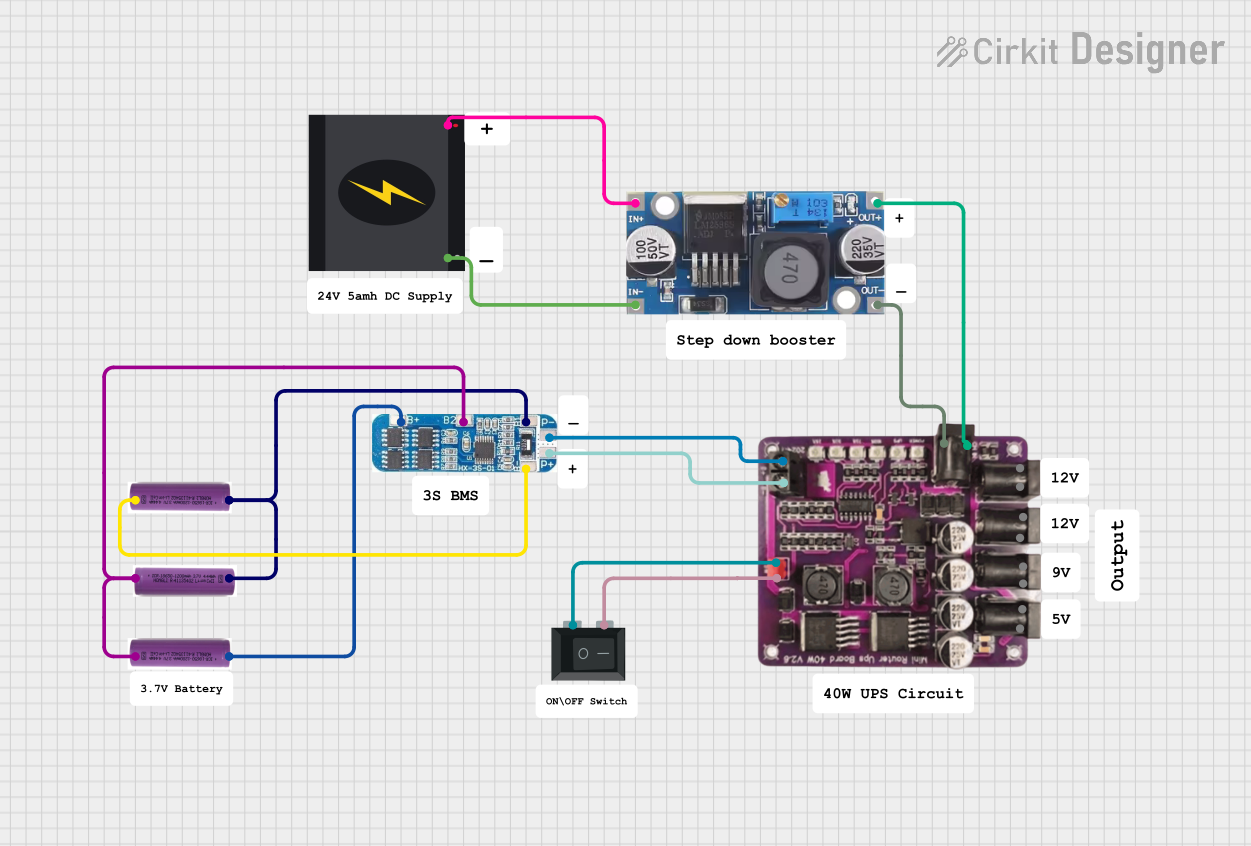
 Open Project in Cirkit Designer
Open Project in Cirkit Designer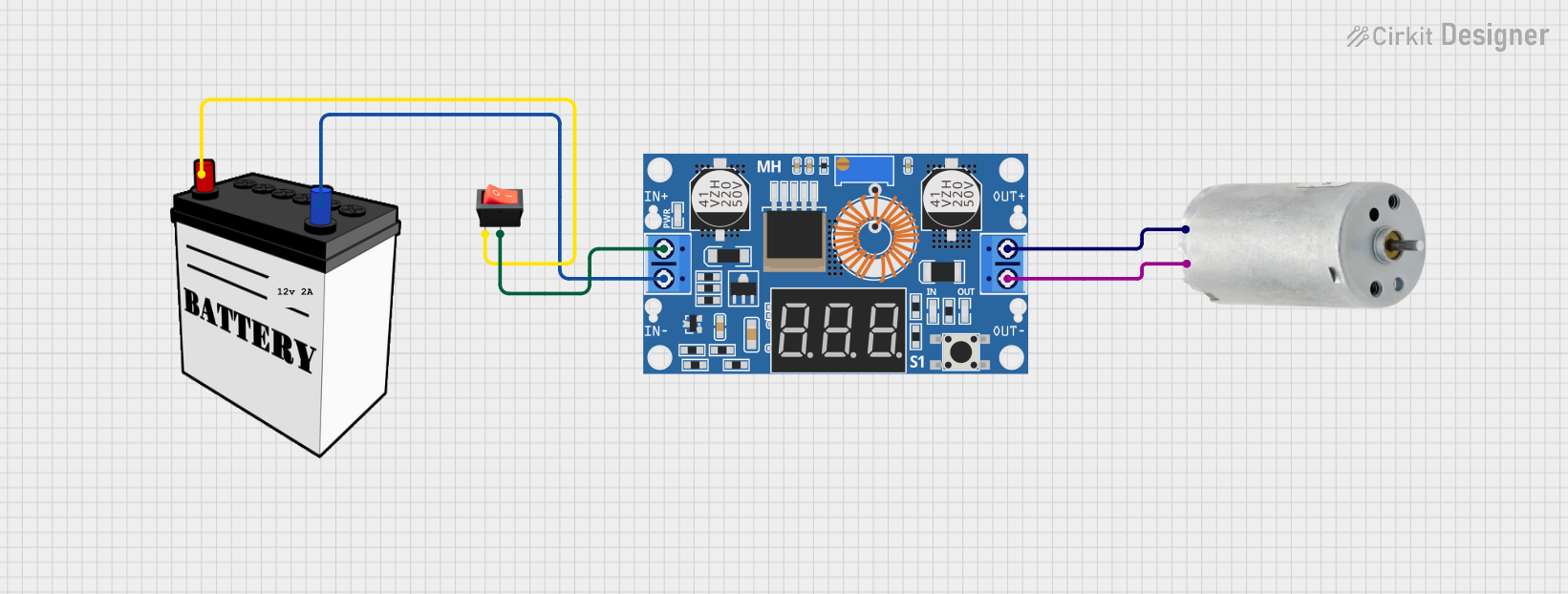
 Open Project in Cirkit Designer
Open Project in Cirkit Designer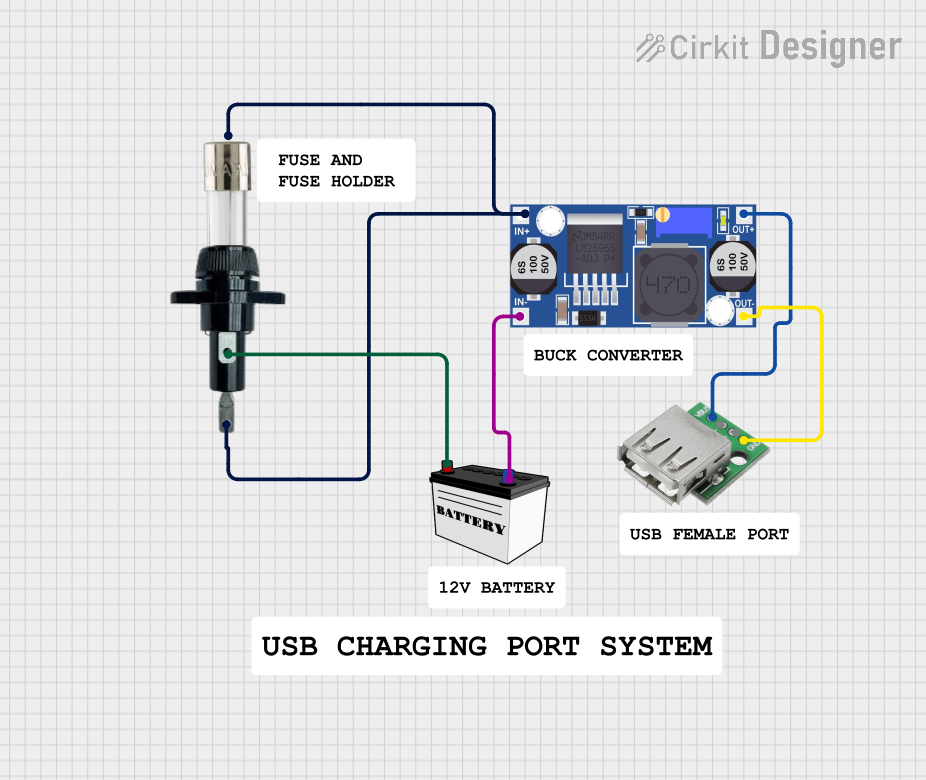
 Open Project in Cirkit Designer
Open Project in Cirkit Designer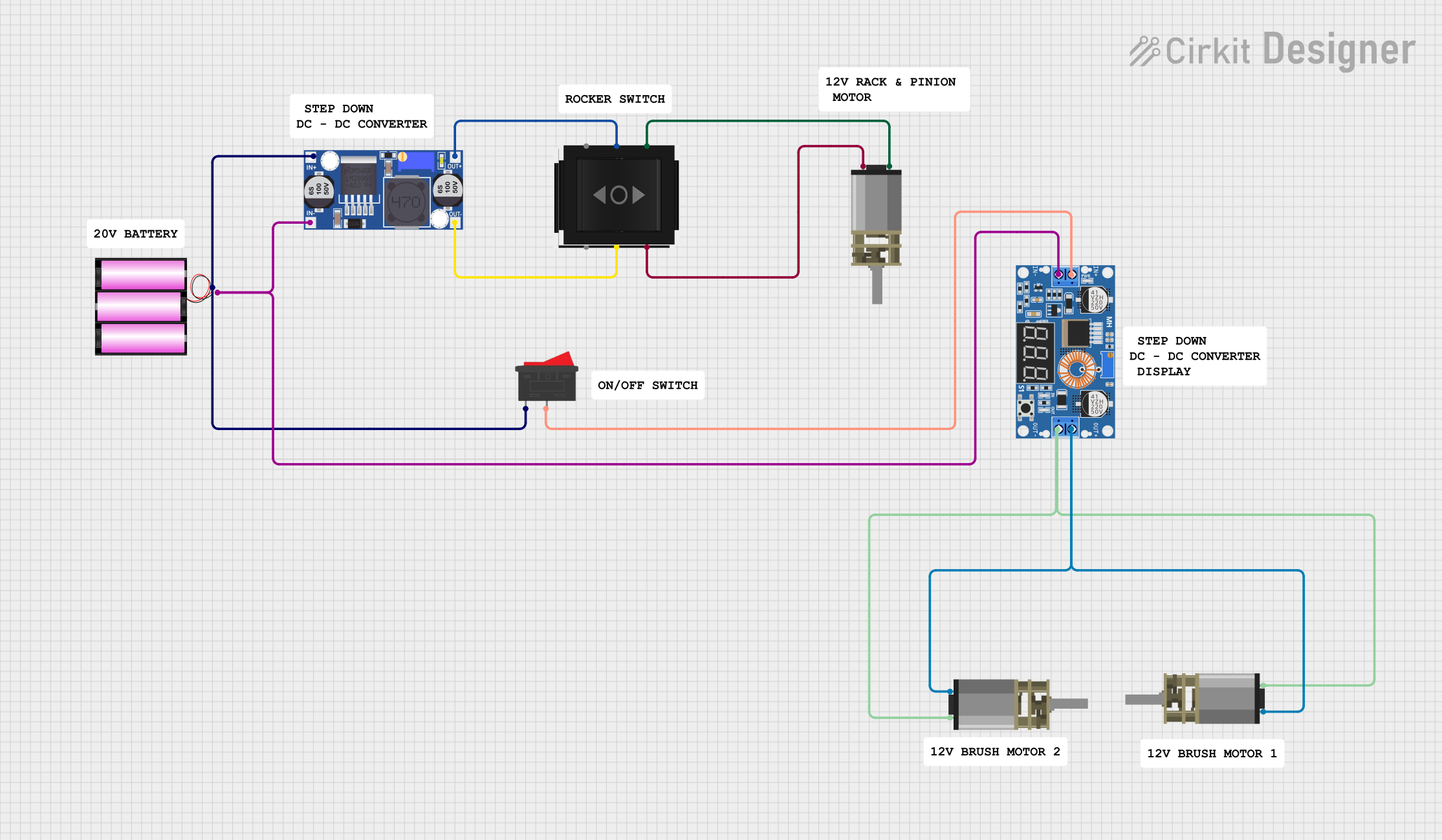
 Open Project in Cirkit Designer
Open Project in Cirkit DesignerExplore Projects Built with 24/12v Buck

 Open Project in Cirkit Designer
Open Project in Cirkit Designer
 Open Project in Cirkit Designer
Open Project in Cirkit Designer
 Open Project in Cirkit Designer
Open Project in Cirkit Designer
 Open Project in Cirkit Designer
Open Project in Cirkit DesignerCommon Applications
- Powering 12V devices from a 24V battery or power supply
- Automotive systems (e.g., stepping down truck battery voltage)
- Industrial control systems
- Embedded systems and microcontroller projects
- LED lighting systems
Technical Specifications
The following table outlines the key technical details of the 24/12V Buck Converter:
| Parameter | Value |
|---|---|
| Input Voltage Range | 18V to 26V |
| Output Voltage | 12V ± 0.5V |
| Maximum Output Current | 5A |
| Efficiency | Up to 95% |
| Switching Frequency | 150 kHz |
| Operating Temperature | -40°C to +85°C |
| Dimensions | 45mm x 25mm x 15mm |
Pin Configuration and Descriptions
The 24/12V Buck Converter typically has four pins or terminals. The table below describes each pin:
| Pin/Terminal | Label | Description |
|---|---|---|
| 1 | VIN | Input voltage (connect to 24V power source) |
| 2 | GND | Ground (common ground for input and output) |
| 3 | VOUT | Output voltage (provides 12V regulated output) |
| 4 | EN (optional) | Enable pin (used to turn the converter on/off) |
Usage Instructions
How to Use the 24/12V Buck Converter in a Circuit
- Connect the Input Voltage:
- Connect the VIN pin to a 24V DC power source.
- Ensure the input voltage is within the specified range (18V to 26V) to avoid damage.
- Connect the Ground:
- Connect the GND pin to the ground of your circuit.
- Connect the Output Voltage:
- Connect the VOUT pin to the load that requires 12V.
- Ensure the load does not exceed the maximum output current of 5A.
- Optional Enable Pin:
- If the EN pin is available, connect it to a logic HIGH (e.g., 3.3V or 5V) to enable the converter. Leave it unconnected or pull it LOW to disable the converter.
Important Considerations and Best Practices
- Heat Dissipation: The converter may generate heat during operation, especially at high currents. Use a heatsink or ensure proper ventilation to prevent overheating.
- Input Voltage Protection: Use a fuse or transient voltage suppressor (TVS) diode on the input to protect the converter from voltage spikes.
- Output Filtering: For sensitive applications, consider adding a capacitor (e.g., 100µF) across the output to reduce noise and ripple.
- Polarity: Double-check the polarity of the input and output connections to avoid damage to the converter or connected devices.
Example: Using the 24/12V Buck Converter with an Arduino UNO
The 24/12V Buck Converter can be used to power an Arduino UNO from a 24V power source. Below is an example circuit and code:
Circuit Connections
- Connect the VIN pin of the buck converter to the 24V power source.
- Connect the GND pin of the buck converter to the ground of the power source and the Arduino.
- Connect the VOUT pin of the buck converter to the Arduino's VIN pin.
Arduino Code Example
// Example code to blink an LED connected to pin 13 of the Arduino UNO
// Ensure the Arduino is powered via the 24/12V Buck Converter
void setup() {
pinMode(13, OUTPUT); // Set pin 13 as an output
}
void loop() {
digitalWrite(13, HIGH); // Turn the LED on
delay(1000); // Wait for 1 second
digitalWrite(13, LOW); // Turn the LED off
delay(1000); // Wait for 1 second
}
Troubleshooting and FAQs
Common Issues and Solutions
No Output Voltage:
- Check the input voltage to ensure it is within the specified range (18V to 26V).
- Verify that the EN pin is connected to a logic HIGH (if applicable).
- Inspect the connections for loose wires or incorrect polarity.
Overheating:
- Ensure the load current does not exceed the maximum rating of 5A.
- Improve ventilation or attach a heatsink to the converter.
Output Voltage Fluctuations:
- Add a capacitor (e.g., 100µF) across the output to stabilize the voltage.
- Check for noise or instability in the input power source.
Damaged Converter:
- Verify that the input voltage polarity is correct.
- Ensure the input voltage does not exceed 26V.
FAQs
Q: Can I use the 24/12V Buck Converter to power multiple devices?
A: Yes, as long as the total current draw does not exceed the maximum output current of 5A.
Q: What happens if the input voltage drops below 18V?
A: The converter may fail to regulate the output voltage properly, leading to instability or a complete loss of output.
Q: Is the converter suitable for automotive applications?
A: Yes, the 24/12V Buck Converter is commonly used in automotive systems to step down truck or bus battery voltage to 12V.
Q: Can I adjust the output voltage?
A: Most 24/12V Buck Converters have a fixed output voltage. If adjustable output is required, look for a model with a potentiometer or adjustment feature.